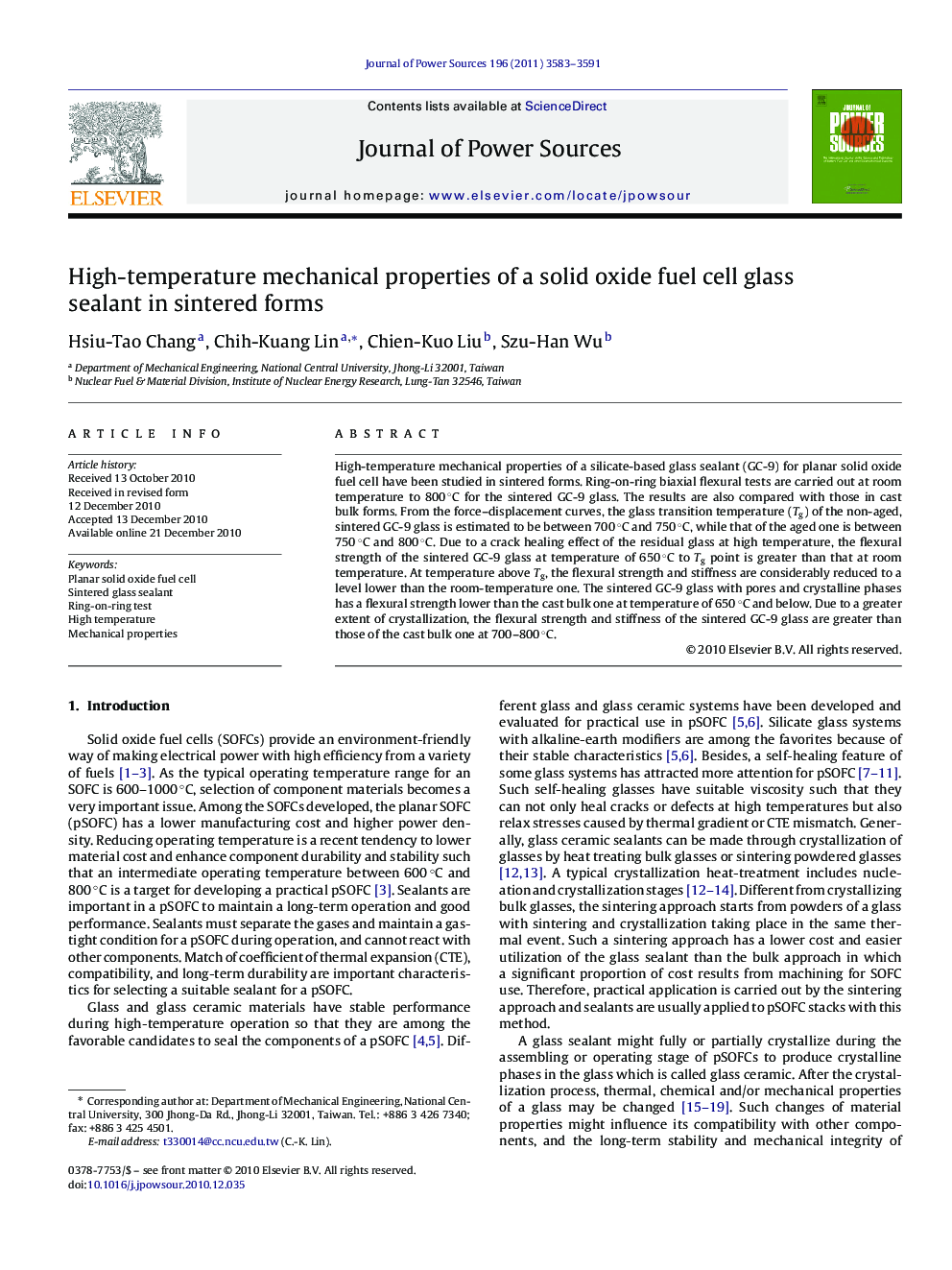| Article ID | Journal | Published Year | Pages | File Type |
|---|---|---|---|---|
| 1288619 | Journal of Power Sources | 2011 | 9 Pages |
High-temperature mechanical properties of a silicate-based glass sealant (GC-9) for planar solid oxide fuel cell have been studied in sintered forms. Ring-on-ring biaxial flexural tests are carried out at room temperature to 800 °C for the sintered GC-9 glass. The results are also compared with those in cast bulk forms. From the force–displacement curves, the glass transition temperature (Tg) of the non-aged, sintered GC-9 glass is estimated to be between 700 °C and 750 °C, while that of the aged one is between 750 °C and 800 °C. Due to a crack healing effect of the residual glass at high temperature, the flexural strength of the sintered GC-9 glass at temperature of 650 °C to Tg point is greater than that at room temperature. At temperature above Tg, the flexural strength and stiffness are considerably reduced to a level lower than the room-temperature one. The sintered GC-9 glass with pores and crystalline phases has a flexural strength lower than the cast bulk one at temperature of 650 °C and below. Due to a greater extent of crystallization, the flexural strength and stiffness of the sintered GC-9 glass are greater than those of the cast bulk one at 700–800 °C.
Research highlights▶ More crystalline phases are formed in sintered glass than in cast bulk one. ▶ Extent of crystallization in sintered glass is increased with aging time. ▶ Aged, sintered glass has a higher glass transition temperature than the non-aged one. ▶ Aged, sintered glass has a greater strength at 700–800 °C than the non-aged one. ▶ Sintered glass has a greater strength at 700–800 °C than the cast bulk one.
